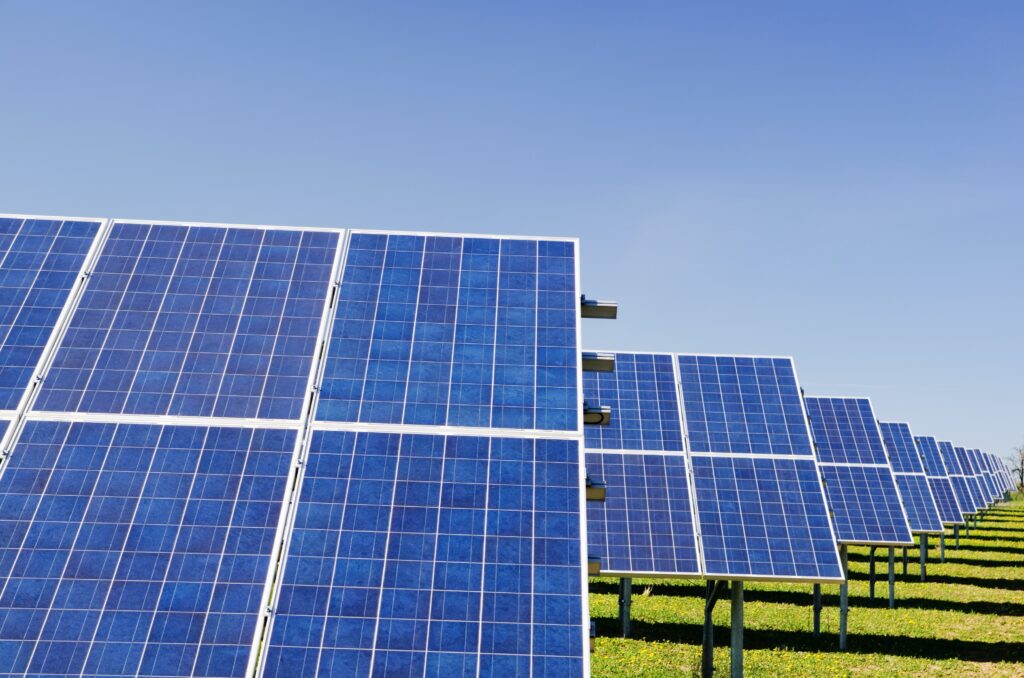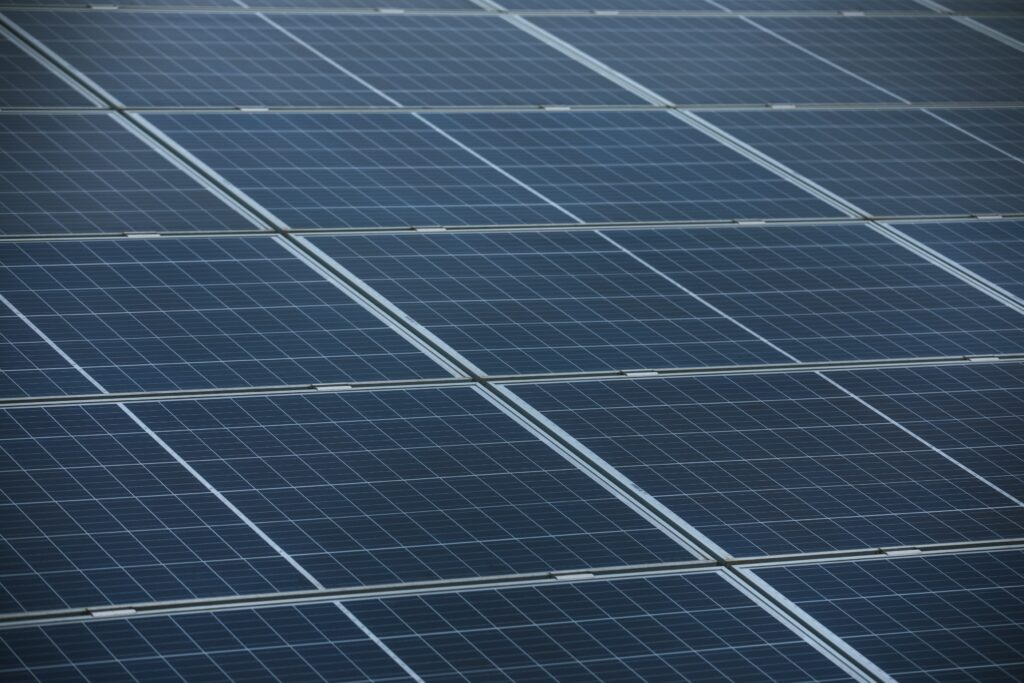Have you ever wondered if solar panels still work on cloudy days? You may be surprised to learn that solar panels can indeed generate electricity, even when the sun is hiding behind clouds. While they may not produce as much energy as on a clear, sunny day, solar panels are still capable of harnessing the sun’s rays and converting them into power. In this article, we will explore how solar panels function in cloudy weather and discuss their effectiveness in generating electricity when the skies are not as bright.
Understanding Solar Energy Production
Solar energy production refers to the process of converting sunlight into usable electricity through the use of solar panels. Solar panels, also known as photovoltaic (PV) panels, are made up of multiple photovoltaic cells that harness the energy from the sun and convert it into direct current (DC) electricity. These cells are typically made from semiconductor materials, such as silicon.
The working principle of solar panels is based on the photovoltaic effect, which occurs when photons from sunlight hit the surface of the solar cells. This interaction causes electrons in the cells to be released from their atoms, creating an electric current. This direct current is then converted into alternating current (AC) using an inverter, making it suitable for powering homes and businesses.
Types of Solar Panels
There are several types of solar panels that can be used for harnessing solar energy. The most common types include monocrystalline, polycrystalline, and thin-film solar panels.
Monocrystalline panels are made from a single crystal structure, offering higher efficiency and a sleek black appearance. Polycrystalline panels, on the other hand, are made from multiple crystal structures and have a distinctive blue color. While they are slightly less efficient than monocrystalline panels, they are more cost-effective.
Thin-film solar panels, as the name suggests, are made by depositing a thin layer of semiconductor material onto a substrate. They are flexible and lightweight, allowing for a variety of applications. However, they generally have lower efficiency compared to crystalline silicon panels.

Benefits and Limitations of Solar Energy
Solar energy offers numerous benefits that make it an attractive option for both residential and commercial use. First and foremost, solar energy is a renewable source of power, utilizing the abundant sunlight that is available. This significantly reduces reliance on fossil fuels, leading to reduced greenhouse gas emissions and a smaller carbon footprint.
Furthermore, solar energy can provide long-term cost savings. Once the initial installation cost is covered, solar panels require minimal maintenance and have a lifespan of approximately 25 to 30 years. This translates into reduced electricity bills and potential energy independence.
Despite these benefits, solar energy production does have some limitations. One of the primary challenges is its dependency on sunlight. Cloudy weather can significantly impact the efficiency of solar panels, reducing their power output. Additionally, the initial cost of installing solar panels may be a deterrent for some, although government incentives and subsidies can help offset this expense.
Effect of Weather on Solar Panel Efficiency
The efficiency of solar panels is directly impacted by the weather conditions. The amount of sunlight reaching the panels and the temperature of the cells play a crucial role in determining their performance.
Impact of Sunlight on Solar Energy Production
Sunlight is the primary source of energy for solar panels. The intensity and duration of sunlight directly affect the amount of energy that can be generated. During sunny days, when there are no obstructions or clouds in the sky, solar panels receive optimum sunlight, resulting in higher efficiency and power output.
Conditions that Hamper Solar Energy Production
Cloudy weather can significantly impact solar energy production. Thick cloud cover reduces the amount of sunlight reaching the solar panels, diminishing their efficiency. Rain and snow can also obstruct the panels and further reduce their power output. Additionally, extreme temperatures, both hot and cold, can affect the performance of solar panels, causing a decline in efficiency.
Alterations in Solar Panel Efficiency based on Weather Variation
Solar panels are designed to handle variations in weather conditions, but their efficiency is affected by weather changes. Cloud cover, in particular, can lead to a decrease in power output. On a partly cloudy day, with intermittent clouds passing over the panels, there will be fluctuations in the electricity production. However, even on cloudy days, solar panels can still generate electricity, albeit at a reduced rate.

Solar Panel Performance in Cloudy Weather
Performance Comparison between Clear and Cloudy Days
The performance of solar panels is undoubtedly better on clear, sunny days compared to cloudy ones. On clear days, solar panels receive maximum sunlight exposure, allowing them to produce the highest amount of electricity. However, Solar panels can still generate electricity on cloudy days, although at a reduced capacity.
How Solar Panels Capture Sunlight in Cloudy Conditions
Solar panels can still capture sunlight and convert it into electricity, even in cloudy conditions. While direct sunlight is ideal for optimal efficiency, solar panels can still absorb diffused sunlight. Diffused sunlight refers to the sunlight that passes through clouds or other atmospheric particles and is scattered in different directions. Solar panels capture this diffused sunlight and convert it into usable electricity.
Real-life Examples of Solar Energy Production in Cloudy Climates
There are regions around the world that experience cloudy weather for a significant portion of the year, yet have successfully utilized solar energy. One such example is Germany, which has become a leader in solar energy production despite its often overcast skies. The country has implemented policies and technologies that maximize the efficiency of solar panels even in cloudy conditions. This showcases the potential of solar energy production in areas with less favorable weather conditions.
The Impact of Cloud Cover on Solar Panels
Clouds play a vital role in the scattering of sunlight, affecting the amount and intensity of light that reaches the Earth’s surface. This, in turn, has implications for solar energy production.
Function of Clouds in Scattering Sunlight
Clouds act as natural diffusers, scattering sunlight in various directions. When sunlight encounters a cloud, it is dispersed and reflected, leading to lower direct radiation reaching the ground. This diffusion can affect the efficiency of solar panels, as they are designed to harness direct sunlight.
The Silver Lining Effect and Its Influence on Solar Energy Production
Despite the scattering effect of clouds, there is a phenomenon known as the “silver lining effect” that can benefit solar energy production. When clouds are thin or have gaps between them, sunlight can penetrate more effectively, resulting in increased power output from the solar panels. This effect occurs when there is a combination of direct and diffused sunlight, allowing solar panels to capture a greater amount of light.
Types of Clouds and Their Impact on Solar Power Generation
Different types of clouds have varying impacts on solar power generation. Thick, dark clouds block a significant amount of sunlight, resulting in reduced power output. Cumulus clouds, common on partly cloudy days, can have a mixed effect. While they may obstruct sunlight momentarily, they also allow periods of direct sunlight to pass through. Therefore, the impact of clouds on solar power generation depends on their density, thickness, and movement.

Efficiency of Different Types of Solar Panels in Cloudy Conditions
Solar panels come in various types, and their performance in cloudy weather can differ. Let’s compare the efficiency of monocrystalline, polycrystalline, and thin-film solar panels under such conditions.
Comparison of Monocrystalline, Polycrystalline, and Thin-Film Solar Panels in Cloudy Weather
Monocrystalline panels generally have the highest efficiency among the three types, meaning they can generate more electricity under any given condition. This advantage extends to cloudy weather, as monocrystalline panels can better capture and convert the available sunlight. Polycrystalline panels follow closely, offering slightly lower efficiency but remaining relatively effective in cloudy conditions. Thin-film panels, though less efficient overall, can still generate electricity in cloudy weather due to their ability to capture diffused sunlight.
Effect of Cloud Cover on Concentrated Solar Power (CSP) Systems
Concentrated Solar Power (CSP) systems, which use mirrors or lenses to focus sunlight onto a receiver, can also be affected by cloud cover. The concentration of sunlight is crucial for the operation of CSP systems, and clouds can disperse or block this concentrated light. However, modern CSP technologies have advanced to include thermal energy storage, allowing for a more consistent power output even in cloudy conditions.
Adaptive Technologies for Cloudy Weather
Several technologies have been developed specifically to enhance solar energy production in low-light environments and cloudy weather.
Solar Panel Technologies Designed for Low-Light Environments
Certain solar panel technologies are specifically designed to perform well in low-light environments. These panels utilize improved cell structures, such as backside passivation, which increases efficiency and reduces the impact of reduced sunlight. Additionally, some manufacturers have developed panels with back contact technology, which allows for better performance in low-light and shadowed conditions. These advancements ensure that solar panels can still generate electricity even on cloudy days.
The Role of Maximum Power Point Trackers (MPPTs) during Cloudy Conditions
Maximum Power Point Trackers (MPPTs) play a crucial role in optimizing solar panel performance, especially in low-light conditions. MPPTs are electronic devices that enable solar panels to operate at their maximum power output by continuously tracking and adjusting the voltage and current. During cloudy conditions, MPPTs can help extract the maximum available energy from the solar panels, compensating for the reduced sunlight and maximizing power generation.
Impact of Solar Panel Positioning and Angle in Cloudy Conditions
The positioning and angle of solar panels also play a role in their performance in cloudy conditions. By orienting solar panels towards the sun’s path and adjusting their tilt angles, optimal sunlight exposure can be achieved, even in cloudy weather. This strategic positioning helps maximize the absorption of available sunlight and enhances the overall efficiency of the solar panels.
Solar Battery Storage in Cloudy Conditions
Solar battery storage is an essential component of solar energy systems, providing a means to store surplus electricity generated during optimal conditions for use when sunlight is limited.
Importance of Battery Storage for Solar Energy Systems
Battery storage allows for the utilization of solar energy even when sunlight is not directly available. It stores excess electricity generated during peak sunlight hours and releases it when needed, ensuring a continuous and reliable power supply. In cloudy conditions, solar battery storage becomes particularly valuable, as it allows for the use of stored energy to compensate for the reduced power output from solar panels.
How Cloudy Weather Influences Solar Battery Efficiency
Cloudy weather can affect the charging of solar batteries due to the decreased power output of solar panels. With lower sunlight intensity, the rate at which the batteries can be charged is reduced. However, modern battery technologies, such as lithium-ion batteries, are designed to handle these variations and still maintain their efficiency. This ensures that solar battery storage systems can continue to provide electricity, even in cloudy conditions.
Selection of Ideal Solar Battery for Cloudy Weather
When choosing a solar battery for locations with frequent cloudy weather, it is essential to consider its capacity, efficiency, and depth of discharge. A higher-capacity battery can store more energy, allowing for longer periods of electricity supply during cloudy days. Additionally, batteries with higher efficiency can make the most out of the available solar energy, maximizing overall system performance. Lastly, a greater depth of discharge ensures that more energy can be extracted from the battery, further extending its usefulness in cloudy conditions.
Solar Energy Production in Various Geographic Locations
Solar energy production can vary significantly depending on the geographical location and the prevalence of sunny or cloudy weather conditions.
Comparison of Solar Energy Production in Sunny vs Cloudy Geographical Locations
Geographical locations with a higher number of sunny days throughout the year generally experience increased solar energy production. These regions receive more direct sunlight, allowing for higher efficiency and power output from solar panels. However, even in cloudy geographical locations, solar energy production is still possible. While the overall output may be lower than in sunnier areas, advancements in solar technologies and adaptive measures can help maximize the potential of solar energy production in these regions.
Case Studies of Successful Solar Energy Production in Cloudy Regions
Several case studies demonstrate the successful implementation of solar energy production in cloudy regions. For example, Japan, known for its frequent cloud cover, has become a leader in solar energy adoption. By utilizing advanced technologies and implementing efficient solar panel systems, Japan has shown that solar energy can thrive even in less sunny environments. Similarly, parts of the United Kingdom and even regions in Scandinavia have witnessed significant solar energy production despite their reputation for overcast skies. These examples highlight the potential for solar energy in cloudy climates with the right strategies and technologies in place.
Financial Implications of Solar Panels in Cloudy Weather
When considering the financial viability of solar panels in cloudy weather, it is essential to examine the cost-effectiveness and available incentives or subsidies.
Cost-Effectiveness of Solar Panel Usage in Cloudy Weather
The cost-effectiveness of solar panels in cloudy weather depends on several factors, including the region’s specific climate conditions, the efficiency of the chosen solar panels, and the cost of electricity from alternative sources. While solar panels may not provide the same level of efficiency and immediate returns as in sunnier areas, their long-term cost savings from reduced energy bills can still make them a financially viable investment.
Government Incentives and Subsidies for Solar Energy in Different Weather Conditions
Many governments around the world offer incentives and subsidies to encourage the adoption of solar energy, irrespective of the prevailing weather conditions. These incentives can help offset the initial installation costs and make solar panels more financially attractive, especially in cloudy regions. Government programs may include tax credits, feed-in tariffs, grants, or subsidies for renewable energy installations. By taking advantage of such incentives, individuals and businesses can make solar energy even more financially viable, even in less sunny climates.
Future Developments in Solar Technology for Cloudy Environments
The future of solar technology holds exciting possibilities for enhancing the efficiency of solar panels in cloudy environments.
Emerging Technologies to Enhance Solar Panel Efficiency in Cloudy Conditions
Researchers and manufacturers are continually exploring new technologies to improve the efficiency of solar panels in low-light conditions. These advancements include the development of new materials, such as perovskite, that can generate electricity from diffused and lower levels of sunlight. Additionally, advancements in energy storage systems, such as more efficient batteries or hybrid solar systems, are being pursued to enable greater utilization of solar energy during cloudy periods.
The Prospects and Challenges of Solar Energy in Cloudy Climates
While there are inherent challenges in harnessing solar energy in cloudy climates, advancements in technology and the increasing affordability of solar panels are making it a more viable option. The prospects for solar energy in cloudy climates lie in adopting a multi-faceted approach that maximizes efficiency, utilizes energy storage systems, and leverages government incentives. By addressing these challenges and embracing emerging technologies, solar energy can play a significant role in achieving sustainable and clean energy solutions worldwide.
In conclusion, solar energy production is impacted by weather conditions, particularly by cloud cover. While solar panels are most efficient on clear, sunny days, they can still generate electricity in cloudy weather by capturing diffused sunlight. The efficiency of solar panels in cloudy conditions can vary based on the type of panels, with monocrystalline panels generally offering higher efficiency. Adaptive technologies, such as solar panel designs for low-light environments and maximum power point trackers, help optimize solar panel performance during cloudy weather. Solar battery storage is also crucial for maintaining a continuous power supply in cloudy conditions. Geographical locations with frequent clouds can still experience successful solar energy production, as demonstrated by various case studies. The financial viability of solar panels in cloudy weather depends on factors such as government incentives and subsidies, as well as the long-term cost savings from reduced energy bills. The future of solar technology holds promise for enhancing efficiency in cloudy environments through emerging technologies and advancements in energy storage systems. Despite the challenges, solar energy has the potential to play a significant role in achieving sustainable and clean energy solutions, even in cloudy climates.




